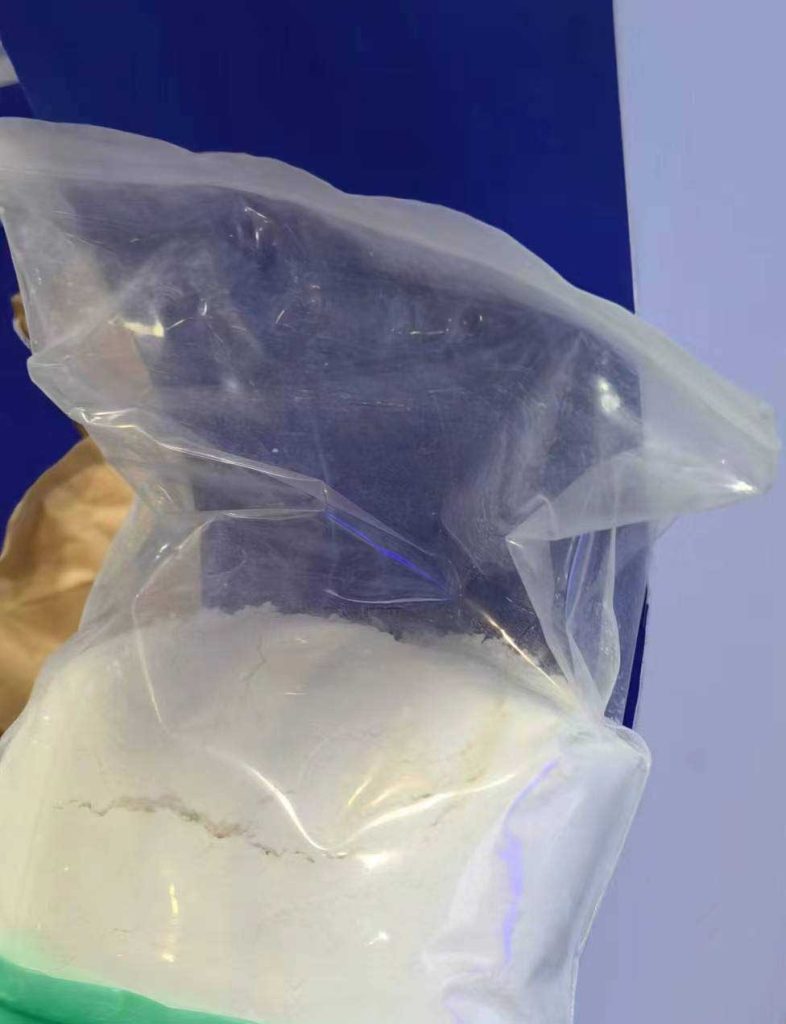Hydroxypropylmethyl Cellulose
What is Hydroxypropylmethyl Cellulose (HPMC)?
Hydroxypropylmethyl cellulose is a natural polymer derived from raw materials, undergoing a series of chemical processes to produce a non-ionic cellulose compound. Specifically used in wall putty applications, hydroxypropylmethyl cellulose plays a significant role in enhancing the quality of mortar/concrete walls and ceilings, resulting in a white, smooth, and dry surface that is ideal for painting.
Hydroxypropylmethyl cellulose acts as a cellulose ether, with its foundation in methyl cellulose. One of its key benefits lies in its ability to fill the fine pores present in mortar and concrete surfaces. This attribute contributes to improved gelation, surface activity, water retention, thickening, adhesion, dispersion, emulsification, and film-forming characteristics. Hydroxypropylmethyl cellulose greatly enhances the performance of cement-based wall putty.
By incorporating hydroxypropylmethyl cellulose into wall putty formulations, construction industries capitalize on its multifaceted advantages. The compound’s ability to modify gelation and surface properties enhances the overall texture and finish of the applied material. Moreover, its water retention and thickening properties contribute to optimal workability, while its adhesive and dispersion attributes promote effective application and durability. Hydroxypropylmethyl cellulose facilitates emulsification and film-forming, further contributing to the desired qualities of wall putty.
Hydroxypropylmethyl Cellulose and organophilic clay are belong to paint additive and oil drilling additive.
Hydroxypropylmethyl Cellulose
What is Wall Putty?
Wall putty constitutes a specialized construction material that serves a crucial role in preparing surfaces for painting. Composed primarily of white cement, it is augmented with an amalgamation of polymers and assorted minerals, including the noteworthy hydroxypropylmethyl cellulose (HPMC), which significantly influences its performance and attributes.
Hydroxypropylmethyl cellulose is an essential component within wall putty formulations. Derived from natural polymer sources, hydroxypropylmethyl cellulose undergoes a series of chemical processes to emerge as a non-ionic cellulose compound. Its incorporation into wall putty introduces a spectrum of advantageous characteristics, effectively elevating the functional capabilities of the material.
Hydroxypropylmethyl Cellulose
Properties of Hydroxy Propyl Methyl Cellulose
Hydroxypropylmethyl cellulose has a wide spectrum of advantageous properties that make it a valuable ingredient in various applications. These are just a few advantages of what hydroxypropylmethyl cellulose can do in your putty formulation.
Thickening
In wall putty, the thickening prowess of hydroxypropylmethyl cellulose is particularly relevant. When incorporated into the putty formulation, hydroxypropylmethyl cellulose imparts a desirable viscosity and consistency to the mixture. This elevation in viscosity serves to enhance the workability of the putty during application. It prevents undue sagging or slumping when the putty is spread onto vertical surfaces, a common challenge encountered during the application process. This thickening property contributes to maintaining uniformity across the applied surface, ensuring an even distribution of the putty material.
Water Retention | Hydroxypropyl Methylcullulose
Hydroxypropylmethyl cellulose has an innate capacity to retain water within its structure. When added to wall putty, it assists in retaining optimal moisture levels within the mixture. This sustained hydration prolongs the material’s workability, affording ample time for proper application and smoothing. The combination of thickening and water retention, both attributed to Hydroxymethyl Cellulose HPMC, collaboratively enhance the overall manageability and consistency of the wall putty.
Workability
The incorporation of hydroxypropylmethyl cellulose serves to enhance the workability aspects of the putty. Hydroxymethyl Cellulose HPMC’s presence imparts a balanced viscosity to the mixture, contributing to its pliability and ease of application. This augmented viscosity, intricately linked to hydroxypropylmethyl cellulose’s structure, prevents excessive dripping, sagging, or uneven distribution of the putty when it is applied to vertical surfaces. Consequently, workability is substantially improved, enabling smoother and more controlled application.
Slip Resistance | Hydroxypropyl Methylcullulose
Slip resistance pertains to a material’s capacity to provide traction and grip, thereby minimizing the likelihood of accidents caused by slipping, particularly when surfaces are wet or otherwise slick. The inclusion of hydroxypropylmethyl cellulose in formulations directly enhances the slip resistance of such materials. This is achieved through hydroxypropylmethyl cellulose’s ability to modulate the rheological properties of the mixture. Its presence introduces controlled viscosity and texture adjustments that result in a surface better suited to secure footing.
Adhesivity
The inclusion of hydroxypropylmethyl cellulose markedly enhances the adhesivity of the putty to the substrate. This improvement is primarily attributed to Hydroxypropyl Methylcellulose HPMC ‘s molecular structure, which facilitates interaction and adhesion between the putty and the wall surface. As a result, when the putty is applied onto walls or ceilings, it adheres steadfastly, minimizing the risk of detachment, cracking, or peeling over time.
It also enables the putty to be applied onto a diverse range of surfaces, including concrete, plaster, and drywall, with equal effectiveness. Hydroxypropylmethyl cellulose ‘s role in enhancing adhesion ensures that the putty remains firmly attached, even in areas that may experience differential movements or environmental changes.
Hydroxypropylmethyl Cellulose
Applications of Hydroxymethyl Cellulose HPMC in Putty Powder
Hydroxypropylmethyl cellulose’s physical characteristics as a white or off-white powder, it exhibits light transmittance exceeding 50%, indicating its suitability for visually appealing surfaces. With a residual ash content post-ignition of less than 5%, hydroxypropylmethyl cellulose exhibits cleanliness and low impurity levels. The viscosity range of 80000 to 100000 mPa.s is a critical factor that underpins its thickening ability, while the pH range of 5-8.5 ensures compatibility with various formulations. Additionally, its fine particle size, denoted by less than 5% sieve residue, and minimal water content contribute to consistent and reliable performance.
It is primarily known for its role as a thickener, water retention agent, and lubricant. These properties are pivotal in ensuring the putty’s overall effectiveness and usability. By incorporating hydroxypropylmethyl cellulose into putty powder formulations, several distinct benefits are realized. The addition of hydroxypropylmethyl cellulose functions to augment the putty’s viscosity, transforming it into a more cohesive and malleable substance. This effect contributes significantly to enhancing suspension, preventing undue sagging, and maintaining the putty in a uniform and homogeneous state.
Hydroxypropylmethyl cellulose’s impact within putty powder is considerable, with its usage accounting for a substantial portion, often around 90% of the total formulation. This concentration underscores the compound’s critical contribution to the formulation’s success. Its versatility is demonstrated by its varied roles as a thickener, water-retention agent, and lubricant.
Why Is It Necessary to Add HPMC to Putty Powder?
The incorporation of hydroxypropylmethyl cellulose into putty powder formulations assumes a critical role, driven by its different attributes that address several key challenges inherent in putty applications.
Putty chalking, peeling of Hydroxypropylmethylcellulose
The phenomenon of putty chalking and subsequent peeling is a significant concern when working in environments with elevated temperatures and low humidity. In such conditions, the rapid evaporation of moisture from the putty material compromises its curing process. This shortfall in proper moisture content within the putty formulation renders it susceptible to chalking, wherein the surface becomes powdery due to inadequate cohesion and binding. Consequently, this chalking paves the way for peeling, as the diminished adherence of the putty to the underlying substrate increases the likelihood of detachment over time.
The role of hydroxypropylmethyl cellulose in combating putty chalking and peeling is two-fold. Firstly, Hydroxymethyl Cellulose HPMC functions as a water retention agent. Its innate ability to retain moisture within its structure proves invaluable in sustaining the necessary hydration levels within the putty mixture, even in arid conditions. By maintaining optimal moisture content, HPMC extends the curing duration, allowing for proper cohesion and binding of the putty. This not only mitigates the chalking risk but also fortifies the material’s adherence to the substrate, minimizing the potential for peeling.
Secondly, Hydroxymethyl Cellulose HPMC’s inclusion in putty powder imparts a uniform and consistent texture to the mixture. This enhanced cohesion and texture further contribute to its resistance to chalking. The compound’s molecular structure engenders an interlocking effect that enhances the material’s overall stability, even under challenging environmental conditions.
Putty Warped
Putty warping occurs when the surface of the substrate, onto which the putty is applied, is excessively dry or when the construction site experiences elevated temperatures. In these circumstances, the rapid evaporation of moisture from the putty mixture impedes proper curing, leading to undesirable warping or distortion of the putty’s applied layer.
Hydroxypropyl Methyl Cellulose HPMC plays a crucial role in mitigating putty warping through its distinct properties. HPMC functions as a water retention agent, capable of preserving moisture within its structure. When incorporated into putty formulations, HPMC helps counterbalance the rapid moisture loss that occurs in dry conditions or high temperatures. By maintaining an adequate level of moisture, HPMC sustains the putty’s workable consistency and extends the curing process. This crucially prevents the occurrence of warping, as the putty layer retains its uniformity and adherence to the substrate.
Putty Cracking
Putty cracking is a phenomenon frequently attributed to the improper application of putty, often involving excessive thickness that leads to premature drying of the surface before the interior has had sufficient time to dry. This disparity in drying rates results in tension and stress, leading to unsightly and structurally compromising cracks in the putty layer. Severe cracking necessitates the removal and reapplication of putty, while cracked joints demand meticulous joint preparation before the putty application.
The addition of hydroxypropylmethyl cellulose can significantly mitigate the challenge of putty cracking. Hydroxypropyl Methyl Cellulose HPMC in putty formulations has prolonged moisture content ensures a more gradual and balanced drying process, mitigating the discrepancies in drying rates between the surface and interior. Consequently, the risk of cracking due to tension and uneven drying is substantially minimized.
Fast Drying
Fast drying in putty applications is often a result of unfavorable environmental conditions that accelerate the reaction of the composite materials within the putty. Under circumstances characterized by elevated temperatures, low humidity levels, excessive ventilation, and direct exposure to sunlight, the putty mixture may undergo rapid curing. This accelerated curing process compromises the putty’s ability to properly settle, adhere, and dry uniformly, leading to a host of undesirable outcomes, including compromised structural integrity and suboptimal aesthetics.
The presence of hydroxypropylmethyl cellulose within putty powder formulations also complements strategies to counter fast drying. Its cohesive properties foster a uniform interaction between the composite materials, allowing for more balanced and controlled curing even in adverse conditions.
Putty Bubbling
Introducing hydroxypropylmethyl cellulose into the putty formulation can effectively mitigate the issue of putty bubbling. Hydroxypropyl Methyl Cellulose HPMC’s water retention properties assume a key role in maintaining moisture levels within the putty mixture. When incorporated into the formulation, HPMC counteracts the rapid moisture evaporation characteristic of high temperatures and dry substrates. By sustaining optimal moisture content, hydroxypropylmethyl cellulose enables a controlled and gradual drying process, reducing the likelihood of air bubble formation.
Please inqury us about our Hydroxypropyl Methylcullulose .


